Marketing Types
Feb 13, 2024
By Ari Manor , CEO at ZOOZ

This is one in a series of articles that provide detailed and updated information about Marketing. In this specific article, which focuses on Marketing Types, you can read about:
- Marketing Online and Offline
- Digital Marketing
- Direct Marketing Campaigns
- Marketing One to One
- Marketing Outbound and Marketing Inbound
- Marketing without Cookies
- Marketing without Advertising
- Marketing without a Budget
- Marketing without Sales
For additional articles about Marketing, see the Topic Menu.

Marketing Online and Offline
Marketing encompasses a wide range of strategies and channels, both online and offline, each offering unique advantages and challenges. Understanding the synergy between online and offline marketing can significantly enhance a brand's visibility, engagement, and overall success.
Here's an overview of how both realms can be effectively integrated:
Online Marketing
- Digital Presence: Establishing a strong digital presence through a well-designed website, SEO optimization, and engaging social media profiles.
- Content Marketing: Creating valuable content to attract and engage audiences, including blogs, videos, and infographics.
- Email Marketing: Using email campaigns to communicate directly with customers, providing updates, offers, and valuable information.
- Social Media Marketing: Engaging with audiences on platforms like Facebook, Instagram, Twitter and LinkedIn to build community and brand loyalty.
- Paid Advertising: Utilizing PPC (Pay-Per-Click), display ads, and social media ads to drive targeted traffic and conversions.
- Analytics and Data: Leveraging data analytics to track performance, understand customer behavior, and refine strategies.
Offline Marketing
- Print Advertising: Utilizing newspapers, magazines, brochures, static signs and billboards to reach a broader audience.
- Outdoor Advertising: Signs, billboards, and transit advertising.
- Direct Mail: Sending personalized mail to customers' homes for a direct and tangible connection.
- Events and Trade Shows: Participating in or hosting events to engage with customers face-to-face, building relationships and brand awareness.
- Public Relations: Managing media relations through press releases, interviews, and public appearances to enhance brand image.
- Networking: Leveraging personal and professional networks to build brand recognition and form strategic partnerships.
Integrating Online and Offline Marketing
- Consistent Branding: Ensure consistent branding across all online and offline channels to reinforce brand identity and message.
- Cross-Promotion: Use offline events to promote online content and vice versa, creating a seamless customer experience across all touchpoints.
 Case Study: A Local Bookstore's Community-Centric Approach
Case Study: A Local Bookstore's Community-Centric Approach- Company: The Last Bookstore, Los Angeles, CA, USA (2019)
- What Was Done: The Last Bookstore combined offline and online marketing by hosting community events, readings, and art installations, while actively engaging with their community on social media platforms. They utilized Instagram to showcase their unique space and events, creating a compelling visual narrative that attracted both local customers and tourists.
- Results/Impact: This approach resulted in increased foot traffic to the store and heightened engagement on social media platforms. The Last Bookstore became a well-known cultural spot in Los Angeles, with Instagram followers growing by 40% in the year, contributing to sustained business growth in a challenging retail environment.
- Data-Driven Decisions: Combine data from both online and offline campaigns to gain comprehensive insights into customer preferences and behaviors.
- Personalization: Integrate online data (e.g., website behavior) with offline interactions (e.g., event attendance) to create personalized marketing messages.
- Note: Nowadays, advanced digital signs can also provide personalization, by matching display ads with the audience near them, using camera and AI interpretation, in real time.
- Note: Nowadays, advanced digital signs can also provide personalization, by matching display ads with the audience near them, using camera and AI interpretation, in real time.
- Omnichannel Strategy: Develop an omnichannel marketing strategy that allows customers to interact with the brand in a cohesive manner, whether online (e.g. – using a website chat) or offline (e.g. – scanning QR codes).
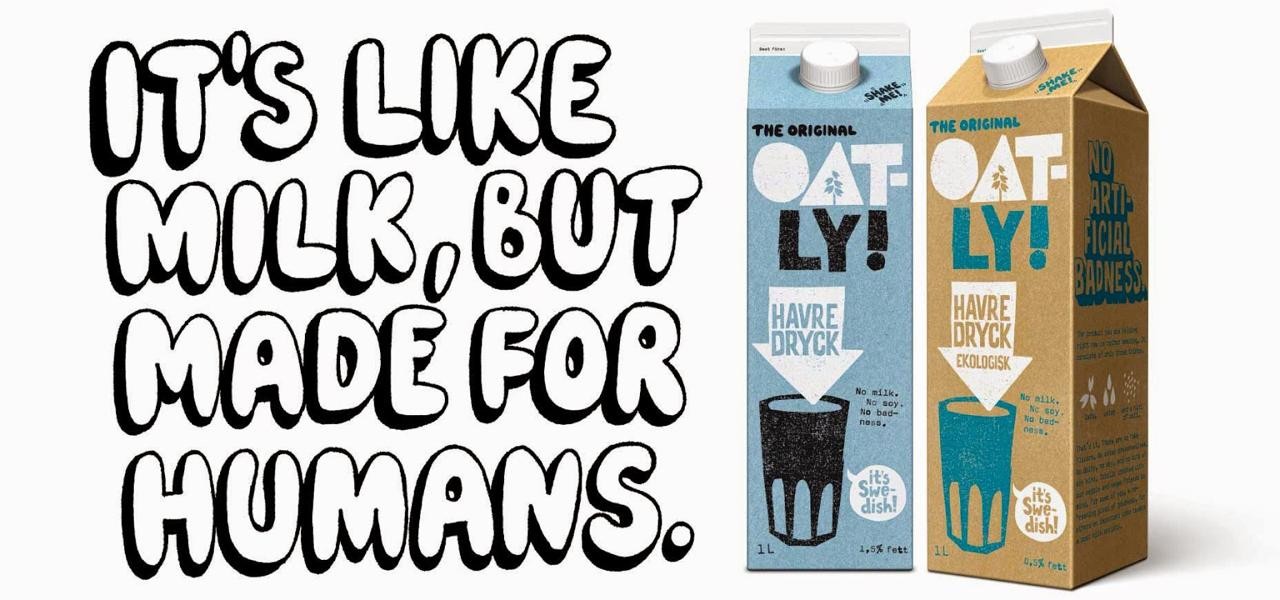 Case Study:
Case Study:
Oatly's Blended Marketing Approach- Company: Oatly, Sweden (2020)
- What Was Done: Oatly implemented a unique marketing strategy that seamlessly blended online and offline efforts. This included bold outdoor advertising campaigns with witty and provocative messaging, alongside a strong online presence that engaged audiences through social media platforms and influencer collaborations. The brand focused on promoting the benefits of oat milk as a sustainable and healthy alternative to dairy.
- Results/Impact: Oatly saw a significant increase in brand recognition and sales globally. The company reported a 106% increase in revenue from 2019 to 2020, demonstrating the effectiveness of integrating online and offline marketing channels to build brand awareness and drive consumer interest.
Effectively combining online and offline marketing strategies can create a more dynamic and comprehensive approach, reaching customers wherever they are. The key is to leverage the strengths of each channel while maintaining a unified brand message and goal, ultimately driving greater engagement and achieving business objectives (see examples below). Additionally, it is also often highly effective to combine channels and interactions with potential customers in a creative and innovative way, in order to achieve high impact campaigns.
Examples of Successful Omnichannel Strategies
Implementing a successful omnichannel strategy involves creatively integrating various channels and interactions to craft high-impact campaigns. Here are some real-life examples of brands that have excelled in creating seamless and innovative omnichannel experiences:
- Disney: Disney's approach to omnichannel is unparalleled, beginning with its planning website and extending to its mobile app, which becomes a critical tool in the park experience. From booking your trip to navigating the parks, securing FastPasses, and even using it as your hotel room key, Disney ensures a seamless experience across all touchpoints, enhancing customer engagement and satisfaction.
- Starbucks: Starbucks' mobile app integrates mobile payment and rewards system flawlessly. Customers can order and pay for their coffee via the app, avoiding lines altogether. The rewards system is updated in real-time across all channels, encouraging customer loyalty through a seamless blend of in-store and digital experiences.
- Sephora: Sephora's use of digital tools to enhance the in-store shopping experience is a prime example of omnichannel done right. Customers can scan products in-store to view ratings and reviews, and the "Virtual Artist" app feature allows them to try on makeup virtually. Sephora’s Beauty Bag account integrates customers’ in-store and online purchase history, preferences, and rewards points, providing a personalized shopping experience across all platforms.
- Amazon Go: Amazon Go stores redefine the physical retail experience by eliminating checkout lines. Shoppers enter the store using the Amazon Go app, take the products they want, and leave. The store uses sensors and AI to track what items are taken and charges customers’ Amazon accounts, accordingly, blending digital and physical retail in a groundbreaking way.
- IKEA: IKEA's augmented reality app, IKEA Place, allows customers to visualize how furniture would look in their own homes before making a purchase. This innovative use of technology bridges the gap between online shopping and the tangible, physical product experience, enhancing customer confidence in their purchase decisions.
- Nike: Nike's omnichannel strategy includes the Nike app ecosystem (Nike+, SNKRS, Nike Run Club, and Nike Training Club), which offers personalized workouts, product recommendations, and early access to new releases. In select flagship stores, customers can enjoy unique experiences like customizing their sneakers, showing how digital and physical retail can complement each other to engage customers deeply.
 Case Study:
Case Study:
Frankie & Benny's Interactive Dining Experience
- Company: Frankie & Benny's, UK (2017)
- What Was Done: Frankie & Benny's, a UK-based restaurant chain, launched an omnichannel strategy that integrated their online booking system with an in-restaurant experience that included digital menus and interactive games for waiting customers. They also offered exclusive online deals redeemable in-store.
- Results/Impact: The initiative resulted in a 20% increase in online bookings and a noticeable improvement in customer satisfaction scores. The seamless integration of digital and physical experiences helped Frankie & Benny's increase repeat visits and enhance the dining experience.
These examples demonstrate how integrating digital and physical channels, leveraging data for personalization, and employing technology to enhance customer experiences are key elements of successful omnichannel strategies. These brands have managed to increase customer engagement, loyalty, and satisfaction by ensuring consistency, convenience, and innovation across all customer interactions.

Digital Marketing
Digital Marketing refers to the targeted, measurable, and interactive marketing of products or services using digital technologies to reach and convert leads into customers and retain them. The key objective is to promote brands, build preference, engage with customers, and increase sales through various digital marketing techniques and channels.
Here’s a comprehensive overview of digital marketing:
Core Elements of Digital Marketing
- Search Engine Optimization (SEO): Enhancing website visibility in search engine results pages through organic methods.
- Content Marketing: Creating and distributing valuable, relevant content to attract and retain a clearly defined audience.
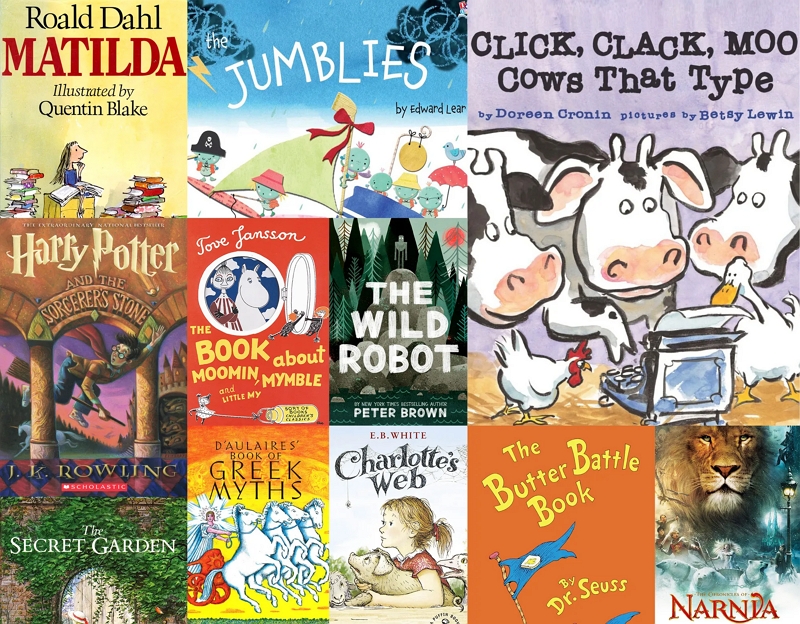 Illustrative Case Study: LittleReadBook's Targeted Content Strategy Wins Readers
Illustrative Case Study: LittleReadBook's Targeted Content Strategy Wins Readers- Company: LittleReadBook, an independent online bookstore, Minneapolis, Minnesota
- What Was Done: To compete in the crowded online retail space, LittleReadBook implemented a digital marketing strategy focused on personalized content, including book recommendations based on browsing history, author interviews, and interactive book clubs on their platform.
- Results/Impact: This content-centric approach led to a 40% increase in customer engagement on their platform and a 25% rise in repeat purchases. By creating a community around their brand, LittleReadBook distinguished itself from larger competitors, showcasing the effectiveness of targeted digital marketing strategies in building customer loyalty and driving sales.
- Social Media Marketing: Leveraging social platforms to connect with the audience, build the brand, increase sales, and drive website traffic.
 Case Study: FreshFaces Cosmetics Leverages Social Media for Brand Launch
Case Study: FreshFaces Cosmetics Leverages Social Media for Brand Launch- Company: FreshFaces Cosmetics, a startup cosmetic brand
- What Was Done: FreshFaces launched its brand entirely through digital marketing, focusing on social media platforms. The strategy included influencer partnerships, user-generated content campaigns, and live Q&A sessions with the founders, emphasizing product quality and ethical sourcing.
- Results/Impact: The social media-driven launch strategy generated significant buzz, resulting in the brand selling out its first product line within weeks. FreshFaces' success underscores the power of digital marketing in creating direct connections with consumers and rapidly building brand awareness in the digital age.
- Email Marketing: Sending targeted messages to acquire new customers or nurture existing relationships.
- Pay-Per-Click (PPC) Advertising: Using paid ads to reach internet users on various digital platforms, such as search engines and social media.
- Affiliate Marketing: Partnering with individuals or companies to promote products or services in exchange for a commission.
- Influencer Marketing: Collaborating with individuals who have a significant online following to promote products or services.
- Mobile Marketing: Reaching customers through mobile devices with SMS marketing, app-based marketing, and in-game mobile marketing.
- Analytics: Using data to analyze the behavior of visitors and the effectiveness of digital marketing campaigns.
Benefits of Digital Marketing
- Cost-Effective: Compared to traditional marketing, digital marketing can be more affordable and efficient.
- Targeted: Allows for the precise targeting of demographics, interests, behaviors, and even locations.
- Measurable: Digital campaigns can be easily tracked and measured for their effectiveness using analytics.
- Interactive: Offers interactive ways to engage customers through content, social media, and webinars.
- Global Reach: Digital marketing provides access to a global market.
Challenges in Digital Marketing
- Evolving Algorithms: Staying current with search engine and social media algorithms to maintain effective strategies.
- Data Privacy: Adhering to data protection regulations like GDPR and ensuring customer privacy.
- Adaptability: Keeping up with the fast pace of change in digital tools, platforms, and trends.
Future Trends in Digital Marketing
- Artificial Intelligence: AI and machine learning will play larger roles in personalizing customer experiences.
- Voice Search Optimization: As voice searches increase, optimizing content for voice search will become more important.
- Video Marketing: Video content, especially live video, will continue to be a dominant medium in digital marketing strategies.
In summary, digital marketing is an ever-evolving field that requires marketers to be agile, informed, and strategic in their approach. It encompasses a wide array of practices and channels, each with its unique set of tools, techniques, and metrics. Businesses that effectively harness the power of digital marketing can improve their reach, engagement, and conversions in a digitally-driven marketplace.

Direct Marketing Campaigns
Direct marketing campaigns are targeted, actionable, and measurable efforts that communicate directly with a specific audience to elicit a response or action. These campaigns can take various forms, including email, direct mail, telemarketing, and SMS, allowing businesses to engage with customers on a personal level.
How to Effectively Plan and Execute Direct Marketing Campaigns
- Define Your Objectives: Clearly outline what you aim to achieve with your campaign, whether it’s increasing sales, generating leads, or improving customer loyalty.
- Identify Your Target Audience: Utilize customer data and market research to pinpoint who your campaign should target. Understanding your audience’s preferences and behaviors is crucial for tailoring your message.
- Choose the Right Channels: Based on your audience’s preferences, select the most effective direct marketing channels. For some, email might be best; for others, direct mail or SMS could be more effective
- Craft a Compelling Message: Your message should be clear, persuasive, and tailored to the audience. Highlight the benefits of your offer and include a strong call-to-action (CTA).
- Design Your Materials: Whether it’s an email template, a postcard, or a telemarketing script, ensure your materials are professionally designed and align with your brand identity.
- Personalize Your Approach: Personalization can significantly increase the effectiveness of direct marketing. Use customer data to customize messages, offers, and recommendations.
 Case Study:
Case Study:
A Local Winery's Membership Drive- Company: Vineyard Vines, Sonoma, CA, (2018)
- What Was Done: A small local winery, Vineyard Vines, implemented a direct marketing campaign to boost its wine club memberships. They sent out personalized invitations to a curated list of past visitors and local wine enthusiasts, offering an exclusive preview tasting event and special membership benefits.
- Results/Impact: The campaign resulted in a 50% increase in wine club memberships within two months, significantly boosting the winery’s direct sales and customer loyalty. The personalized approach and the allure of exclusive benefits successfully attracted a dedicated customer base.
- Test and Segment: Test different versions of your campaign on small segments of your audience to see what works best. Use this data to refine your approach before rolling out the campaign on a larger scale.
- Measure and Analyze Results: Set up metrics to measure the success of your campaign, such as response rate, conversion rate, and ROI. Analyze these results to understand what worked and what didn’t for future campaigns.
- Follow Up: Depending on the campaign, a follow-up via the same or a different channel can enhance customer engagement and increase conversion rates.
- Ensure Compliance: Be aware of and comply with all relevant regulations and laws related to direct marketing, such as GDPR in Europe for data protection and privacy.
Examples of Successful Direct Marketing Campaigns
- Bespoke Email Campaigns: A clothing retailer sends personalized email offers based on past purchase history and browsing behavior.
- Direct Mail with Augmented Reality: A real estate company sends out brochures that, when scanned with a smartphone, provide a virtual tour of properties.
- Interactive SMS Promotions: A restaurant chain sends SMS messages to customers inviting them to participate in a quiz to win discounts on their next meal.
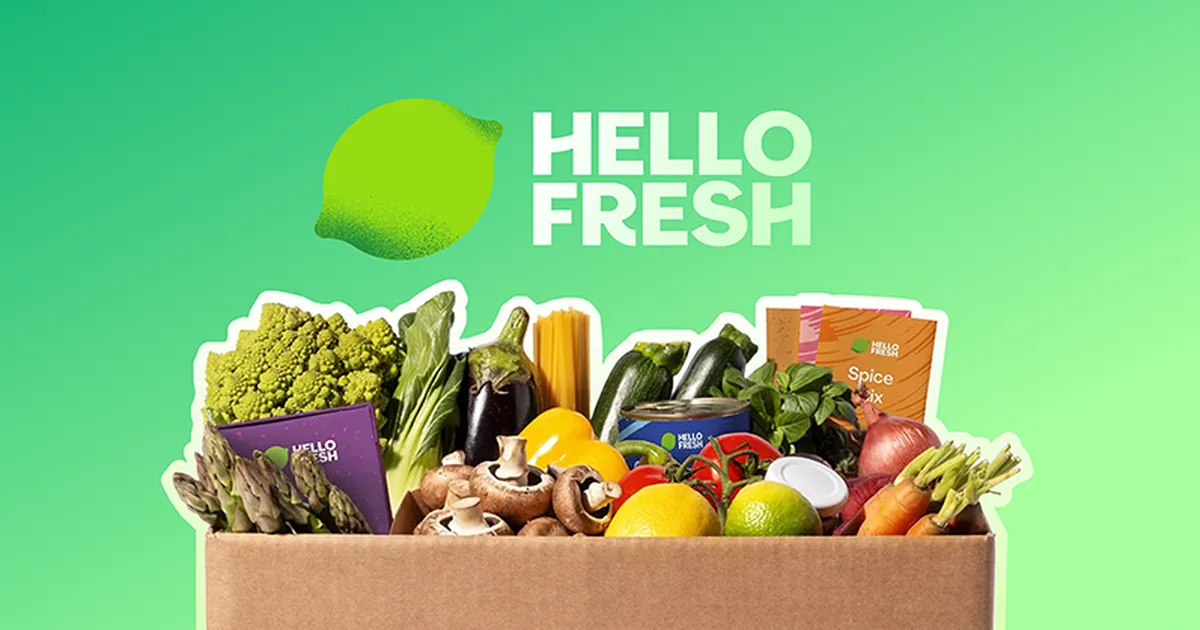 Case Study:
Case Study:
HelloFresh's Targeted Direct Mail Strategy
- Company: HelloFresh, Worldwide (2019)
- What Was Done: HelloFresh launched a direct marketing campaign using targeted direct mail. They utilized customer data to segment their market and tailor offers specifically to each segment, including discount codes for first-time customers and personalized meal recommendations based on previous purchases or dietary preferences.
- Results/Impact: This approach led to a 35% increase in subscription rates among targeted segments within the first three months of the campaign. The direct mail strategy not only increased customer acquisition but also re-engaged past customers, demonstrating the effectiveness of personalized, direct marketing in the digital age.
Direct marketing campaigns, when executed well, offer a powerful way to connect with customers directly, drive engagement, and achieve specific business objectives. The key to success lies in understanding your audience, delivering value through personalized communication, and continuously optimizing based on performance data.

Marketing One to One
One-to-one marketing represents a personalized approach in the marketing sphere, where strategies are tailored to individual customers based on their specific needs, preferences, and behaviors. This approach leverages detailed customer data to deliver highly personalized messages and offers, aiming to build a stronger, more meaningful relationship between the brand and the customer.
How to effectively implement a one-to-one marketing strategy
- Gather and Analyze Customer Data: Collect detailed information on your customers through various touchpoints (website interactions, purchases, social media engagement). Utilize data analytics to understand their preferences, interests, and buying behavior.
- Segment Your Audience: Use the collected data to segment your audience into smaller, more defined groups. Segmentation can be based on demographics, psychographics, behavioral patterns, or transactional history.
- Personalize Communication: Tailor your marketing messages and offers to address the specific needs and desires of individual customers or segments. Personalization can range from custom email content to personalized product recommendations on your website.
- Leverage Technology: Utilize CRM systems, marketing automation tools, and AI technologies to manage customer data, automate personalized communications, and deliver tailored content efficiently.
- Build Long-term Relationships: Focus on nurturing long-term relationships with your customers by consistently providing value through personalized interactions. This could include loyalty programs, exclusive offers, or personalized customer service.
- Feedback Loop: Establish mechanisms to collect feedback from your customers about their experiences and preferences. Use this feedback to refine your one-to-one marketing strategies further.
- Measure and Optimize: Set key performance indicators (KPIs) to measure the effectiveness of your one-to-one marketing efforts. Regularly review these metrics to identify areas for improvement and optimize your strategy accordingly.
Examples of One-to-One Marketing
- Customized Email Campaigns: Sending email communications with content and offers that are directly relevant to the individual recipient, based on their past interactions and preferences.
- Personalized Shopping Experiences: Online retailers recommending products uniquely suited to each customer, based on their browsing and purchase history.
- Targeted Discounts: Offering exclusive discounts or benefits to customers on products or services they’ve shown interest in but haven’t yet purchased.
- Customized Customer Service: Providing customer support that takes into account the customer’s history with the brand, offering solutions based on their specific needs and past experiences.
 Case Study: A Boutique Hotel's Customized Guest Experiences
Case Study: A Boutique Hotel's Customized Guest Experiences- Company: The Hideaway, Asheville, NC, (2020)
- What Was Done: The Hideaway, a boutique hotel, implemented a marketing strategy focused on creating customized guest experiences. Prior to arrival, guests were invited to complete a preference form detailing likes, dislikes, and any special occasions being celebrated. This information was used to personalize their stay, from room decor to dining options.
- Results/Impact: The strategy significantly enhanced guest satisfaction and loyalty, with a reported 40% increase in repeat bookings and a 30% increase in positive online reviews. The Hideaway's approach to one-to-one marketing demonstrated how tailored experiences can differentiate a brand in a competitive market.
- Mass Customization: Offering products tailored to individual preferences on a large scale, allowing customers to customize aspects of their purchase, thereby enhancing personal relevance and satisfaction.
 Case Study: Stitch Fix's Personalized Styling Service
Case Study: Stitch Fix's Personalized Styling Service
- Company: Stitch Fix, USA (ongoing)
- What Was Done: Stitch Fix revolutionized retail with its one-to-one marketing approach, offering personalized styling services based on detailed customer profiles and feedback. Customers receive curated clothing selections from their personal stylist, with the option to keep favorites and return the rest.
- Results/Impact: This personalized service has led to a high level of customer satisfaction and retention, with Stitch Fix reporting an average annual increase in customers of 25% over the past three years. Their success underscores the power of one-to-one marketing in creating meaningful, personalized customer experiences.
One-to-one marketing is a powerful strategy for enhancing customer satisfaction, loyalty, and ultimately, driving sales. By treating customers as individuals with unique needs and preferences, businesses can create more meaningful connections, differentiate themselves from competitors, and achieve better marketing outcomes.
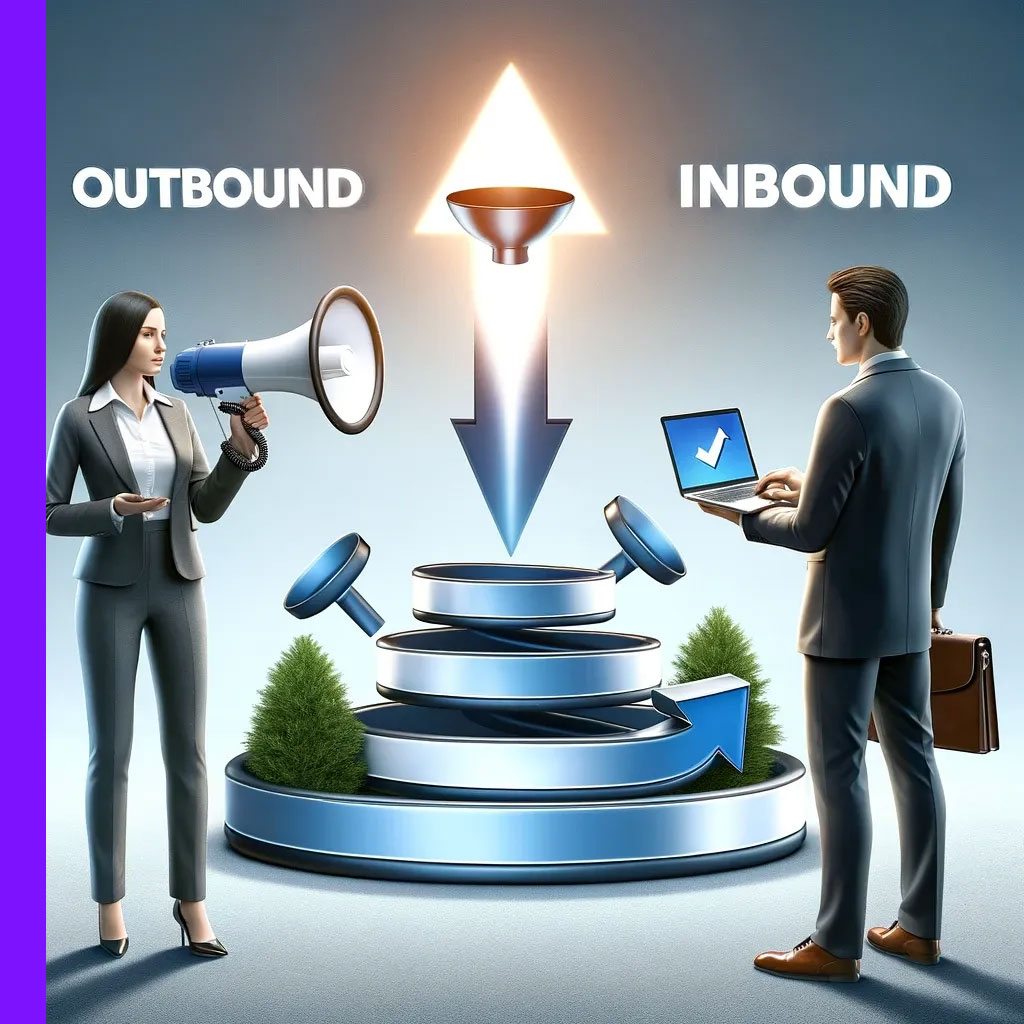
Marketing Outbound and Marketing Inbound
In the realm of marketing, strategies are often categorized into two main types: outbound marketing and inbound marketing. Each approach has its unique methods and goals, catering to various aspects of customer engagement and acquisition. Understanding the distinctions and synergies between them is crucial for devising a comprehensive marketing strategy.
Outbound Marketing
Outbound marketing is a traditional form of marketing that involves sending messages out to a broad audience. It's often considered "interruption-based" marketing because it seeks to gain the attention of consumers through direct and sometimes unsolicited methods.
- Channels: Common channels include TV and radio ads, print advertisements, telemarketing, direct mail, and billboards.
- Goal: To increase brand awareness and reach as many people as possible, regardless of their stage in the buying process.
- Measurement: Success is typically measured by reach and immediate response rates.
- Challenges: Often more expensive and can be less effective due to consumer ad fatigue and the ability to skip or block ads.
 Case Study: A Local Gym's Referral Program
Case Study: A Local Gym's Referral Program
- Company: FitSpace, Boulder, CO, USA (2022)
- What Was Done: FitSpace implemented an outbound marketing strategy by launching a referral program that incentivized current members to bring friends and family to the gym. Each referral that resulted in a new membership earned the existing member a month free, alongside discounts on personal training sessions for both parties.
- Results/Impact: The program generated a 50% increase in new memberships within six months, illustrating how well-executed outbound marketing strategies, like referral programs, can effectively expand a customer base and foster community engagement.
Inbound Marketing
In contrast, inbound marketing focuses on creating quality content that pulls people toward your company and product, where they naturally want to be. It's "permission-based" marketing that aims to attract, engage, and delight customers by providing value.
- Channels: Utilizes blogs, search engine optimization (SEO), social media, content marketing (e.g., eBooks, whitepapers), and email marketing.
- Goal: To attract customers through relevant and helpful content, convert them into leads, and nurture them until they are ready to make a purchase.
- Measurement: Success is measured by lead generation, conversion rates, and customer engagement metrics.
- Advantages: Often more cost-effective over time and builds deeper customer relationships and loyalty.
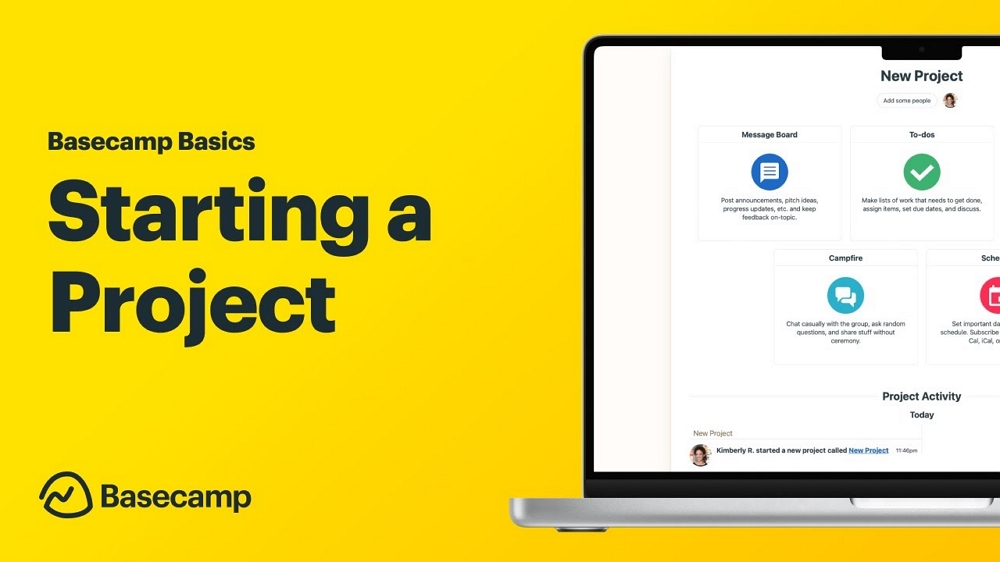 Case Study: Basecamp's Inbound Content Strategy
Case Study: Basecamp's Inbound Content Strategy
- Company: Basecamp, USA (2021)
- What Was Done: Basecamp bolstered its inbound marketing by creating a comprehensive blog and resource center that addressed common project management challenges. Their strategy focused on producing high-quality, valuable content aimed at drawing potential customers seeking solutions, utilizing SEO and social media to amplify their reach.
- Results/Impact: This approach led to a 70% increase in organic search traffic and a 40% growth in subscription rates year over year, demonstrating the effectiveness of inbound marketing in attracting and converting leads through valuable content.
Integrating Outbound and Inbound Marketing
For maximum effectiveness, businesses should consider integrating outbound and inbound marketing strategies. For example, using targeted ads (outbound) to promote a valuable resource like a free eBook (inbound) can capture the interest of new audiences while providing them with valuable content. This integrated approach ensures broader reach while fostering meaningful engagement with potential customers.
 Case Study:
Case Study:
Small Law Firm's Educational Workshop Series
- Company: Smith & Partners Legal, Portland, OR, USA (2019)
- What Was Done: A small law firm, Smith & Partners Legal, utilized outbound marketing to expand its client base by hosting a series of free educational workshops on estate planning and business law. These events were promoted through local advertising, email campaigns, and partnerships with community organizations.
- Results/Impact: The workshops led to a 30% increase in new client consultations within six months, showcasing the impact of outbound marketing efforts in building brand authority and attracting potential clients through educational content.
In summary, while outbound marketing pushes messages to a wide audience to garner immediate responses, inbound marketing pulls interested customers in by offering them valuable information and solutions. An effective marketing strategy often includes a balance of both, tailored to the business's goals, budget, and target audience's preferences.

Marketing without Cookies
Marketing without cookies involves strategies that respect user privacy and do not rely on tracking individual online behaviors through cookies. As digital privacy becomes a growing concern and regulations like GDPR and CCPA become more prevalent, marketers are adapting their strategies. Here's how businesses can effectively market without relying on cookies:
- Contextual Advertising: Place ads based on the content of the web page rather than user behavior, ensuring relevance without personal data.
- First-Party Data Collection: Focus on gathering data directly from your audience through subscriptions, registrations, and feedback forms, ensuring transparency and consent.
 Illustrational Case Study:
Illustrational Case Study:
Email Marketing Revamp for Specialty Grocery Store- Company: Green Grocer, Boulder, CO, USA (2022)
- What Was Done: Facing the challenges posed by cookie-less marketing, Green Grocer revamped its email marketing strategy. They focused on building their email list through in-store sign-ups and website prompts, offering exclusive deals and personalized content based on purchase history and customer preferences gathered with explicit consent.
- Results/Impact: This revamped email marketing strategy led to a 25% increase in email engagement rates and a 15% rise in redemption rates for emailed coupons, proving the effectiveness of consent-based marketing in driving customer engagement and sales without relying on third-party cookies.
- Content Marketing: Create valuable and engaging content that organically attracts visitors to your website or platform, enhancing SEO and building a loyal audience.
- Email Marketing: Use email campaigns to communicate with users who have opted in, providing personalized content and offers based on the information they've willingly shared.
- Search Engine Optimization (SEO): Optimize your website’s content for search engines to improve visibility and attract traffic based on search intent rather than personalized data.
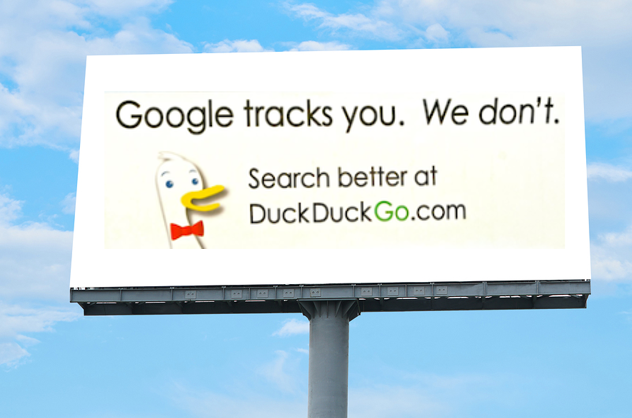 Case Study:
Case Study:
DuckDuckGo's Privacy-Centric Advertising- Company: DuckDuckGo, USA (ongoing)
- What Was Done: DuckDuckGo, a search engine that emphasizes user privacy, marketed itself without relying on cookies or personal data tracking. Instead, it utilized search engine optimization (SEO), content marketing emphasizing privacy and security, and partnerships with privacy-focused organizations to reach its target audience.
- Results/Impact: DuckDuckGo's approach resonated with privacy-conscious consumers, leading to a steady increase in daily searches, with the platform surpassing 100 million search queries per day in early 2021. This growth demonstrates the potential of privacy-focused marketing strategies in a landscape increasingly concerned with data privacy.
- Influencer Partnerships: Collaborate with influencers whose followers match your target audience, leveraging their credibility without the need for personal user data.
- Affiliate Marketing: Partner with affiliate networks or individuals to promote your products, compensating them based on sales or leads rather than user tracking.
- Social Media Engagement: Focus on building communities and engaging with users on social media platforms, relying on public interactions rather than targeted ads.
- Referral Programs: Encourage satisfied customers to refer friends and family, leveraging word-of-mouth marketing that doesn't depend on cookies.
- Direct Mail: Utilize traditional direct mail campaigns to reach customers at home, offering a personal touch that doesn’t require online tracking.
- Event Marketing: Host or participate in events (virtual or in-person) to directly engage with your audience, gather leads, and promote your brand.
- Customer Loyalty Programs: Develop programs that reward repeat customers for their loyalty, encouraging continued business without tracking their online activities.
By adopting these strategies, businesses can navigate the shift away from cookie-based marketing, focusing on privacy-friendly tactics that still effectively engage and grow their audience. This approach not only complies with increasing privacy regulations but also builds trust with consumers who are more conscious of their online privacy.
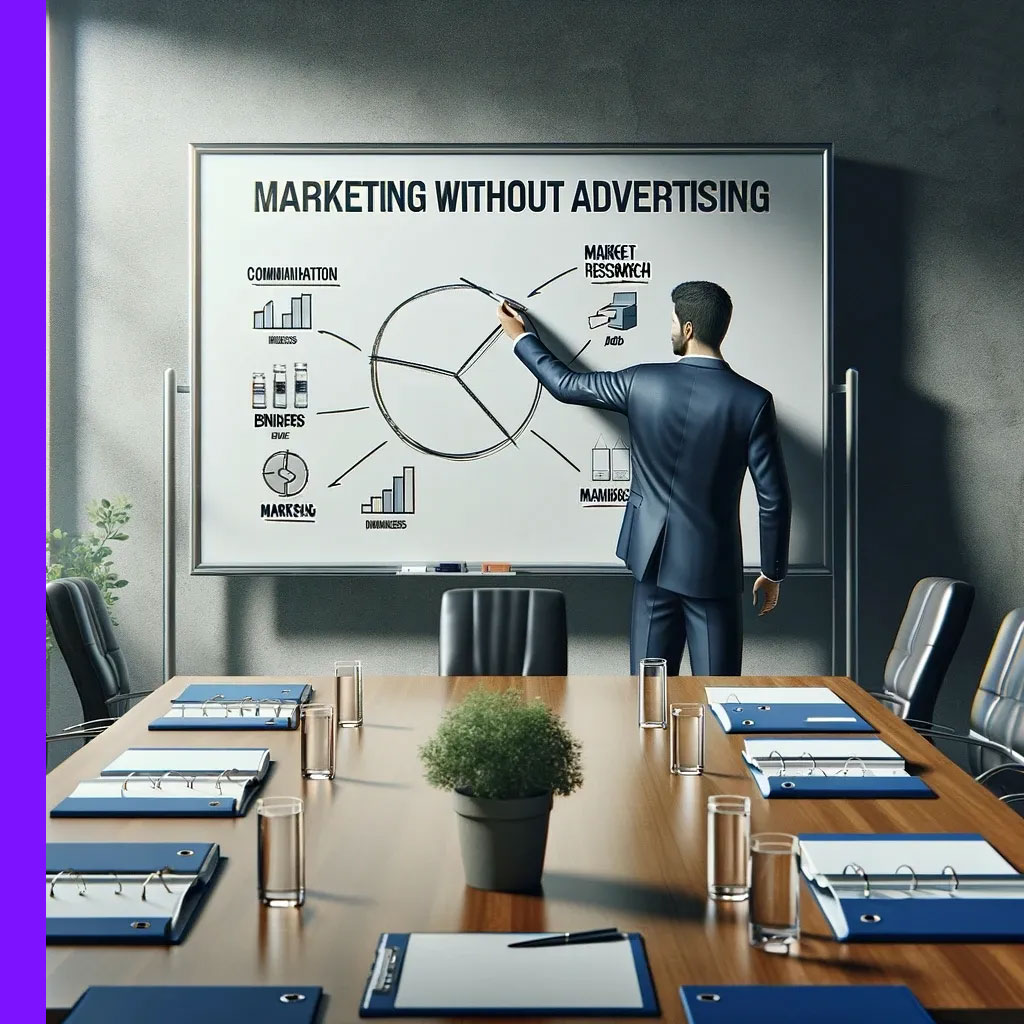
Marketing without Advertising
Marketing without advertising focuses on strategies that build brand awareness, foster relationships, and drive sales through means other than traditional paid advertising. This approach leverages organic growth tactics, word-of-mouth, and value-driven engagement to reach and retain customers.
Avoiding advertising is particularly pertinent for providers who:
- Face Advertising Restrictions: Certain sectors, like pharmaceuticals with prescription drugs and medical professionals, are prohibited from advertising their offerings in many countries, due to regulatory constraints.
- Risk Reputation Damage through Advertising: Entities such as strategic consultants might compromise their perceived credibility by using ads, as reliance on advertising for client acquisition could be viewed unfavorably.
- Lack Resources for Advertising: Many small business owners may not have the financial capacity for costly ad campaigns, cannot allocate funds for a campaign manager, and lack the time or expertise to manage advertising efforts independently.
Key Strategies for Marketing Effectively without Relying on Paid Ads
- Content Marketing: Create and share valuable content (blogs, videos, podcasts) that attracts and engages your target audience, driving traffic and building authority.
- SEO (Search Engine Optimization): Optimize your website and content to rank higher in search engine results, increasing visibility and organic traffic.
- Social Media Engagement: Actively use social media platforms to interact with your audience, share valuable content, and build a community around your brand.
- Email Marketing: Develop a strong email marketing strategy to communicate directly with your audience, providing them with valuable information, updates, and offers.
- Referral Programs: Encourage satisfied customers to refer friends and family, leveraging word-of-mouth to gain new customers.
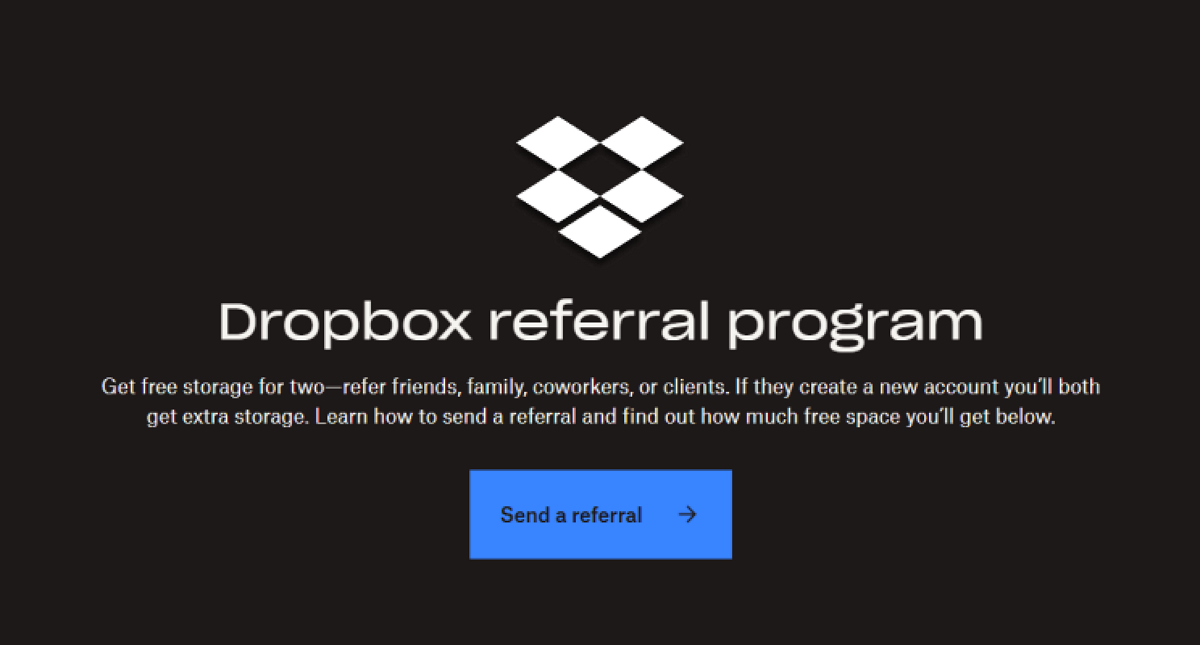 Case Study: Dropbox's Referral Program
Case Study: Dropbox's Referral Program- Company: Dropbox, USA (2009)
- What Was Done: Dropbox implemented a referral program that rewarded both the referrer and the referee with additional storage space. This approach leveraged existing users to spread the word about Dropbox, essentially using customer satisfaction and word-of-mouth as its marketing strategy instead of traditional advertising.
- Results/Impact: The referral program led to a permanent increase in sign-ups by 60%, with 35% of daily sign-ups coming directly from the referral program. This strategy significantly reduced the cost of customer acquisition and played a crucial role in Dropbox's rapid growth during its early years.
- Influencer Collaborations: Partner with influencers who align with your brand to reach new audiences through their trusted recommendations.
- Networking and Events: Participate in or host events (virtual or in-person) to connect with potential customers, partners, and industry peers.
- Public Relations: Utilize PR tactics such as press releases, media outreach, and content placements to gain exposure and credibility without direct advertising.
- Customer Reviews and Testimonials: Encourage customers to leave positive reviews and share their experiences, enhancing your brand’s reputation and trustworthiness.
- Community Involvement: Engage with local communities or niche online communities relevant to your brand, contributing valuable insights and building relationships.
 Illustrartional Case Study: A Local Bakery's Community Engagement
Illustrartional Case Study: A Local Bakery's Community Engagement- Company: Sweet Treats Bakery, Madison, WI, USA (2020)
- What Was Done: Sweet Treats Bakery focused on building strong relationships within the community by participating in local events, donating to local charities, and offering baking classes. This approach built a strong local brand presence and loyalty without traditional advertising.
- Results/Impact: Within a year, Sweet Treats Bakery saw a 50% increase in foot traffic and a 40% increase in sales. Their community-first approach proved that engaging directly with the local community could effectively build brand awareness and drive sales without the need for conventional advertising.
- Content Collaborations: Work with other brands or content creators to co-create content, reaching new audiences through shared efforts.
- Customer Service Excellence: Provide exceptional customer service to encourage repeat business and positive word-of-mouth.
By focusing on these strategies, businesses can build a strong brand presence, cultivate customer loyalty, and drive sales without the direct cost associated with traditional advertising. This approach emphasizes the value of organic growth and the power of building genuine relationships with your audience.

Marketing without a Budget
Marketing without a budget challenges businesses to utilize innovative, cost-effective strategies to engage their audience, build brand awareness, and drive growth. Despite financial constraints, there are numerous ways to market effectively by leveraging time, creativity, and digital platforms. Here’s how:
- Leverage Organic social media: Utilize free social media platforms (Facebook, Instagram, LinkedIn, Twitter) to build a community around your brand. Share engaging content, interact with followers, and use hashtags to increase visibility.
- Content Marketing: Create valuable content such as blog posts, videos, and infographics. This not only attracts and retains an audience but also improves your SEO, helping your website rank higher in search results.
- Email Marketing: Build an email list by offering valuable resources in exchange for email addresses. Use this channel to nurture leads with personalized content, updates, and offers.
- Networking: Engage in online forums, industry groups, and local business communities. Networking can open doors to partnerships, collaborations, and word-of-mouth referrals.
 Case Study: GitHub's Developer Community Building
Case Study: GitHub's Developer Community Building- Company: GitHub, USA (ongoing)
- What Was Done: GitHub grew its user base by focusing on community building among developers. They provided a platform that encouraged collaboration, contribution, and sharing of open-source projects. GitHub's strategy relied on creating a valuable tool for developers, which naturally encouraged users to spread the word.
- Results/Impact: GitHub has become the largest host of source code in the world, with over 65 million developers using the platform as of 2021. This growth was achieved with minimal marketing expenditure, demonstrating the power of building a product that meets the specific needs of a community and encourages organic growth.
- SEO Optimization: Focus on optimizing your website and content for search engines to increase organic traffic. Use keyword research, on-page SEO techniques, and quality content creation.
- Utilize Public Relations: Reach out to media outlets and bloggers for coverage. Write press releases or offer expert opinions to gain free publicity.
- Referral Programs: Encourage your satisfied customers to refer friends and family. Word-of-mouth marketing is powerful and costs nothing.
- Partnerships and Collaborations: Partner with complementary businesses to co-market each other’s services or products. This can double your exposure without doubling your budget.
- Host Free Webinars or Workshops: Share your expertise through free online events. This positions you as an authority in your field and can attract potential customers.
- Leverage User-Generated Content: Encourage your customers to share their experiences with your brand on their social media. This authentic content can influence potential customers more than traditional marketing messages.
- Guest Educational Appearances: Offer to deliver lectures and workshops as a guest speaker for external organizers, providing valuable industry insights at no cost to you and potentially receiving compensation for your expertise.
 Illustrational Case Study: Local Artisan Market Pop-Ups
Illustrational Case Study: Local Artisan Market Pop-Ups
- Company: Craft Collective, Asheville, NC, USA (2019)
- What Was Done: Craft Collective, a small cooperative of local artisans, organized monthly pop-up markets in community spaces to showcase their handmade products. The collective focused on word-of-mouth marketing, leveraging personal networks and social media shoutouts from satisfied customers and participants.
- Results/Impact: The pop-up markets led to a doubling in sales for the participating artisans and significantly increased visibility for Craft Collective without a dedicated marketing budget. This strategy highlighted the effectiveness of leveraging community engagement and word-of-mouth to support small businesses and local artisans.
Marketing without a budget requires a shift from traditional paid advertising to more organic, relationship-building strategies. By focusing on creating value for your audience and leveraging free digital tools and platforms, you can achieve significant marketing success without spending a dime.

Marketing without Sales
Marketing without salespeople involved - refers to strategies and tactics designed to attract, engage, and convert customers autonomously, without the direct intervention of a sales team. This approach relies heavily on digital and automated methods to guide potential customers through the buying journey, from awareness to decision-making. Here’s how it can be effectively implemented:
- Content Marketing: Craft informative and engaging content that guides potential customers through the buyer's journey, answering their questions and providing solutions to their problems.
 Case Study: Khan Academy's Educational Outreach
Case Study: Khan Academy's Educational Outreach- Company: Khan Academy, USA (ongoing)
- What Was Done: Khan Academy, a non-profit educational organization, utilized marketing to spread awareness of its free online courses and resources. Their strategy centered around content marketing, partnerships with schools and educational institutions, and leveraging social media to reach a global audience. The focus was on the mission of providing free, world-class education for anyone, anywhere, rather than on generating sales.
- Results/Impact: This approach led to significant increases in user engagement and course enrollment, with millions of learners worldwide accessing the platform each month. Khan Academy's success in marketing without sales objectives underscores the potential of mission-driven marketing strategies to achieve widespread impact and recognition.
- SEO and SEM: Optimize your online content for search engines to ensure visibility when potential customers search for related topics. Use search engine marketing to place targeted ads in search results.
- Social Media Marketing: Utilize social media platforms to share content, interact with followers, and run targeted ads, encouraging users to visit your website or landing page.
- Email Automation: Implement email marketing campaigns that are triggered by certain actions (e.g., signing up for a newsletter, downloading a resource), providing personalized follow-ups and nurturing leads.
- Landing Pages and CTA: Design landing pages specifically crafted to convert visitors, with clear calls-to-action (CTA) that guide them towards making a purchase or taking another desired action.
- E-commerce Platforms: Utilize online shopping platforms where customers can explore products, make selections, and complete purchases entirely on their own.
- Customer Reviews and Testimonials: Leverage social proof by showcasing customer reviews and testimonials on your website and social media, influencing decision-making without salesperson involvement.
- Chatbots and AI: Deploy chatbots and AI-driven tools on your website and social media channels to answer queries, provide recommendations, and assist with transactions at any time of day.
- Webinars and Virtual Demos: Offer in-depth webinars and product demos that interested parties can sign up for, providing valuable information and showcasing your offerings without a sales pitch.
- Referral Programs: Encourage satisfied customers to refer friends and family through incentives, leveraging word-of-mouth marketing.
 Illustational Case Study:
Illustational Case Study:
Local Community Garden's Volunteer Drive
- Company: Green Spaces Community Garden, Boulder, CO, USA (2021)
- What Was Done: Green Spaces Community Garden launched a marketing campaign focused on recruiting volunteers and promoting community engagement. Utilizing local community boards, social media groups, and word-of-mouth, the campaign highlighted the benefits of volunteering, such as learning about sustainable gardening practices and contributing to local food security.
- Results/Impact: The campaign successfully doubled the garden's volunteer base and increased community participation in events and workshops. By focusing on the intrinsic rewards of involvement rather than sales or revenue, Green Spaces Community Garden was able to grow its impact and foster a more engaged and connected community.
By focusing on these strategies, businesses can create a marketing system that attracts, educates, and converts customers independently, reducing the reliance on traditional sales teams. This not only streamlines the customer acquisition process but also aligns with the increasing consumer preference for self-guided discovery and purchasing.
Marketing Strategy and Consulting
Interested in getting help with your marketing efforts and marketing strategy?
Contact us: info@zooz.co.il ,+972-9-958-5085
Marketing Articles
- Marketing Overview
- Marketing Goals
- Marketing Metrics
- Marketing Types
- Marketing Channels
- Demographic Marketing
- Marketing Business Models
- Industry-Specific Marketing
- Professional Services Marketing
- Marketing Strategy
- Market Research
- Marketing Communications (MarCom)
- Marketing Execution
- Makreting Careers
- Marketing Education
- Marketing Glossary (200 terms)
- Marketing Versus Other Disciplines
- Marketing Agencies and Outsourcing





